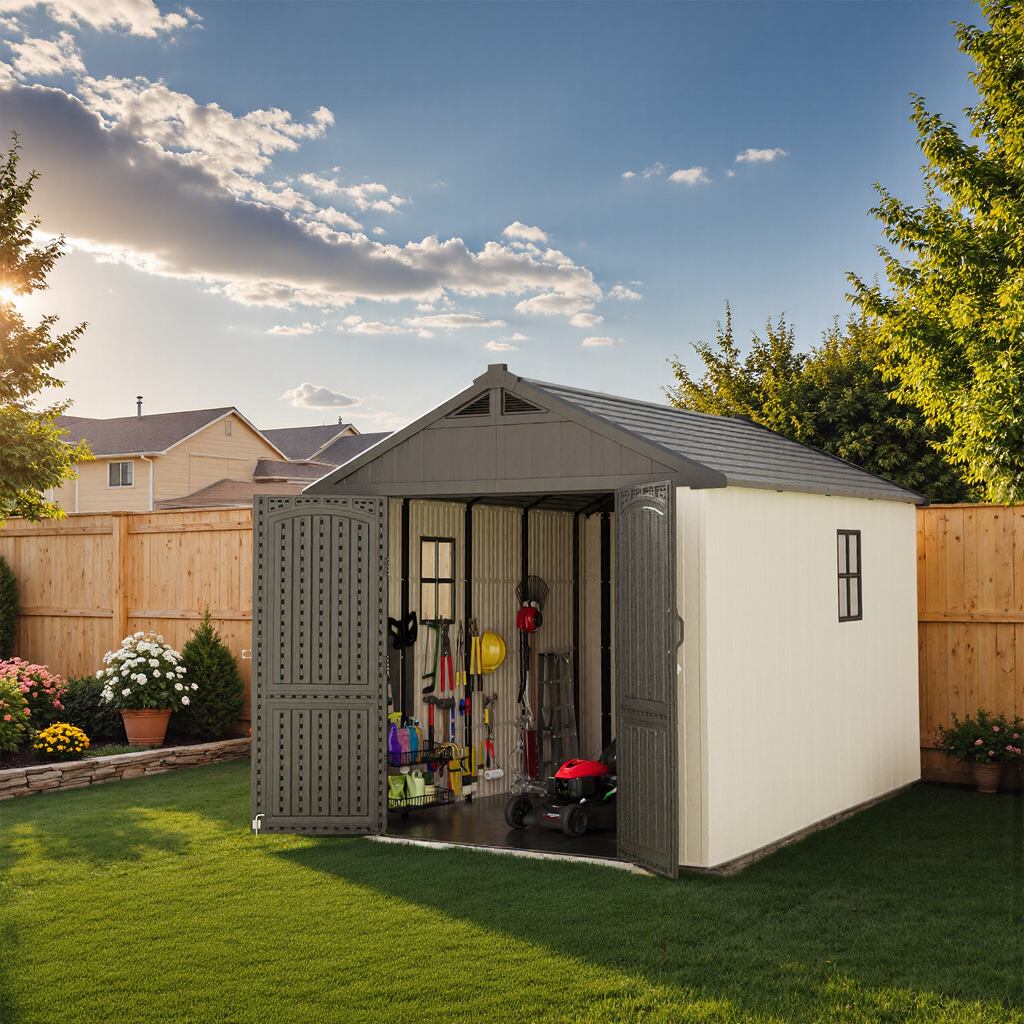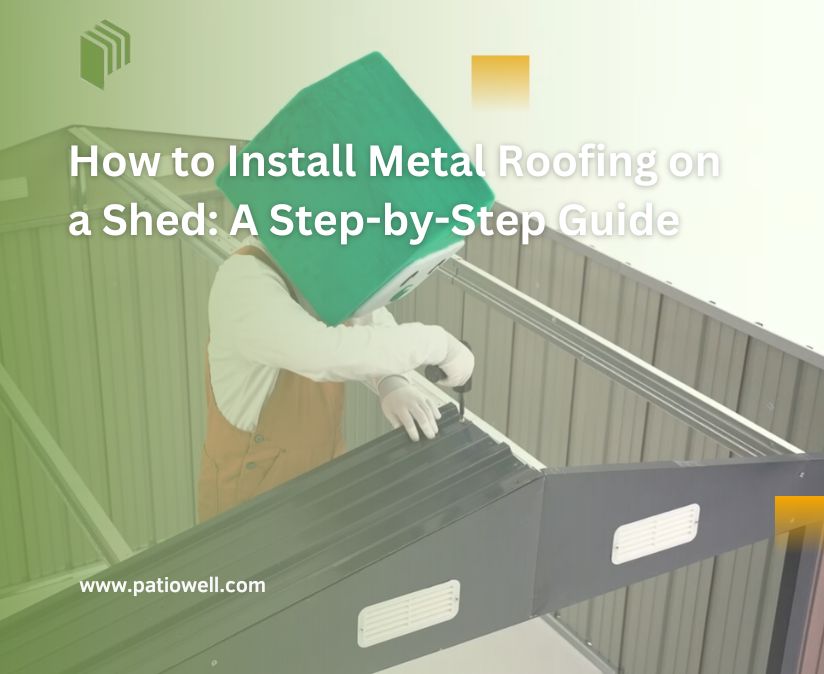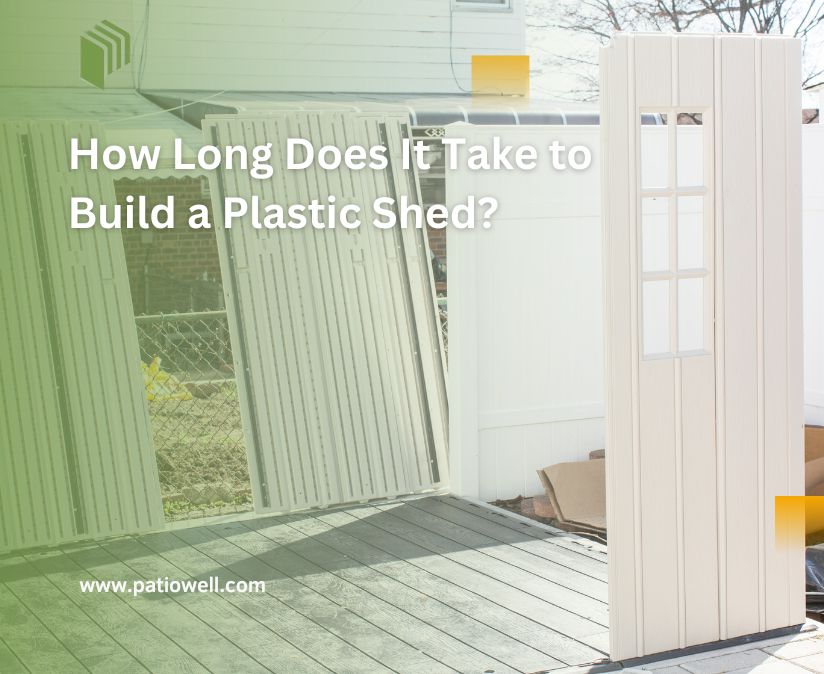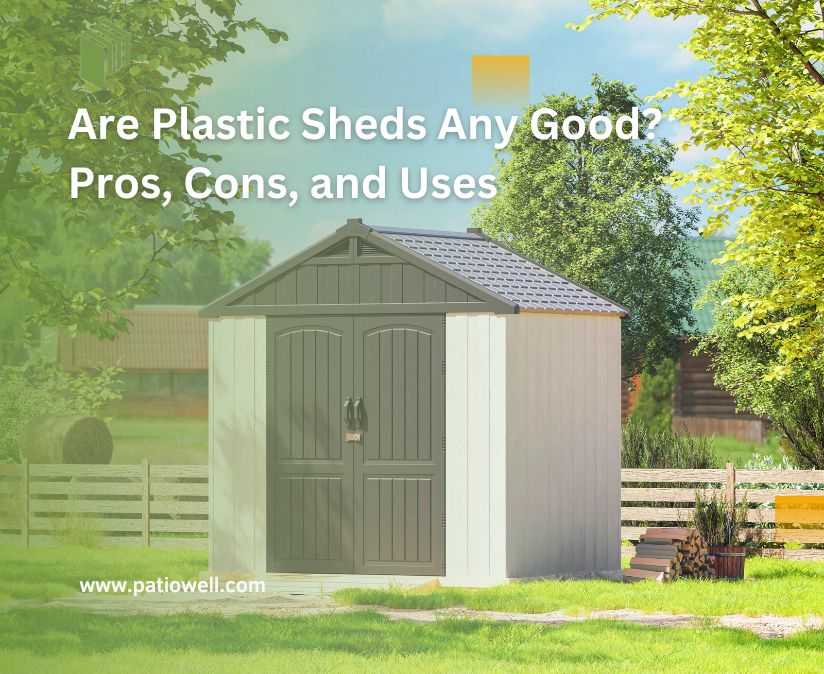Upgrading your shed with metal roofing boosts durability, weather resistance, and long-term value. In this guide, we’ll walk you through everything you need to get the job done right.
Table of Contents:[hide]
Why Choose Metal Roofing for a Shed?
Metal roofing is an excellent choice for sheds thanks to its durability, longevity, and resistance to wind, mold, and rust. It typically lasts 40–70 years with minimal maintenance and withstands harsh weather better than asphalt or plastic alternatives. If you’re investing in a shed for tools, bikes, or seasonal storage, metal roofing provides superior protection.
Tools and Materials You’ll Need
Before you start, gather these essentials:
Tools:
- Measuring tape
- Tin snips or metal cutting saw
- Drill/driver with hex-head bit
- Roofing screws with rubber washers
- Ladder
- Work gloves and eye protection
Materials:
- Metal panels (galvanized or coated steel/aluminum)
- Roofing underlayment (optional)
- Eave trim/drip edge
- Closure strips (foam or rubber)
- Ridge cap
Step-by-Step Installation Guide
Step 1: Measure and Prepare the Roof Frame
Ensure the shed’s roof frame is square, level, and strong enough to support the weight of the metal panels. Measure the width and length of each slope to calculate how many panels you need.
Step 2: Apply Roofing Underlayment (Optional)
Roll out underlayment (such as synthetic roofing felt) and staple or tack it in place. This adds moisture protection and thermal insulation.
Step 3: Install Eave Trim (Drip Edge)
Attach eave trim along the roof edges to direct rainwater away and prevent leaks. Use corrosion-resistant screws every 12–18 inches.
Step 4: Cut and Place the Metal Panels
Lay the first panel at one end of the roof, allowing 1-inch overhang at the eave. If needed, cut panels to size with tin snips or a circular saw fitted with a metal blade.
Step 5: Secure Panels to Frame
Drive roofing screws through the panel’s flat sections (not the ridges) into the framing below. Space screws 12–18 inches apart horizontally and in every third ridge vertically. Overlap panels by one ridge on each side.
Step 6: Install Ridge Cap and Closure Strips
Install foam or rubber closure strips beneath the ridge cap to block water and insects. Then, secure the ridge cap across the roof peak using screws through each metal panel overlap.
Tips for a Successful Metal Roof Installation
- Work in cool, dry weather to avoid slipping hazards
- Wear gloves to handle sharp-edged panels safely
- Check that all screws are tight, but don’t overtighten (which can crush the rubber washer)
- Use chalk lines to keep rows of screws straight
- Start from the leeward side of the shed (away from wind direction)
Common Mistakes to Avoid
- Skipping underlayment, especially in rainy climates
- Mismeasuring panel placement, leading to gaps or uneven rows
- Using too few fasteners, which can cause lifting in strong winds
- Overlapping panels incorrectly—always follow ridge alignment
How Metal Roofing Compares to Other Shed Roofing Options
|
Roofing Type |
Lifespan |
Cost |
Maintenance |
Weather Resistance |
|
Metal |
40–70 years |
Medium |
Low |
Excellent |
|
Asphalt |
15–25 years |
Low |
Medium |
Fair |
|
10–20 years |
Low–Medium |
Low |
Good |
|
|
Wood Shingles |
15–30 years |
High |
High |
Moderate |
Metal wins for longevity, durability, and fire resistance—especially in high-wind or snowy climates.
Patiowell Sheds with Metal Roofing Options
Looking for a shed that’s already designed for metal roofing? Patiowell offers several sizes with pre-engineered metal panels and reinforced frames:
- 10x10 Metal Shed – Ideal for garden tools and bikes
- 10x12 Metal Shed – Popular for workshop or large storage
- 12x12 Metal Shed – Best for multi-purpose or equipment storage
These models are easy to assemble and built to withstand extreme weather—wind, mold, and rust-resistant right out of the box.
FAQs
Can I install metal roofing over an existing roof?
Technically yes, but it’s not recommended for sheds. Always remove old roofing or install on fresh framing to ensure tight, weatherproof sealing.
Do I need insulation under metal shed roofing?
Not required, but insulation or underlayment can reduce condensation and heat buildup.
Will a metal roof make my shed hotter or colder?
Uninsulated metal roofs can get hot in direct sun but cool quickly. Adding vents or thermal insulation helps regulate temperature.
Can one person install it alone?
It’s possible for small sheds, but for safety and alignment, two people are highly recommended.
Conclusion
Installing metal roofing on a shed isn’t just about protection—it’s an upgrade in durability and performance. With the right tools, good planning, and a sturdy Patiowell metal shed, you can enjoy low-maintenance storage that stands the test of time.
Ready to reinforce your shed with a metal roof? Browse Patiowell’s metal shed collection for durable and easy-to-install options.
Diana Mason
Hi there! I’m Diana Mason, the chief editor of Patiowell brand. With over 15 years of diving deep into the world of outdoor furniture, I’ve developed a keen eye for what makes outdoor spaces truly special. I love sharing tips and inspiration to help you create your perfect backyard retreat. Our blog is a reflection of my passion and expertise, featuring only the best pieces that I personally vouch for. Thanks for stopping by—I can't wait to help you transform your outdoor living space!









Leave a comment
All comments are moderated before being published.
This site is protected by hCaptcha and the hCaptcha Privacy Policy and Terms of Service apply.